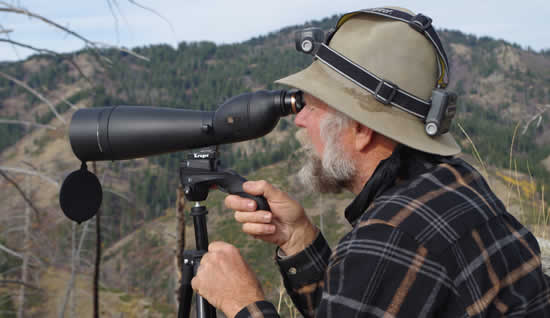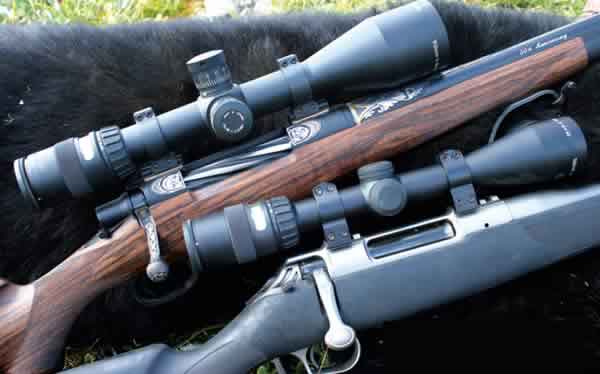
An Eagle-Eyed look at Vortex Strike Eagle
A SWAT Officer puts Vortex’s 1×8 Low Variable Power Optic through its Paces at Two-Day Carbine Class.
Story and Photos by Nick PernaHolographic optics have come a long way in a very short time. They went mainstream in the late 1990s, and by the early 2000s were extremely popular with the military, law enforcement and civilian shooters. In the beginning there were a few major brands: Aimpoint, EO Tech, Trijicon. But the Global War on Terrorism turned holographic optics from “nice to have” into “must have,” as American troops were routinely outshooting their opponents armed primarily with iron sight weapons.
In the field of magnified holographic optics, options were even slimmer. Trijicon became the go-to manufacturer for these with fixed 4-power optics. These optics were adopted in large numbers by the Marine Corps, which realized a need for engaging threats at longer distances. Many attacks on coalition troops were far ambushes, meaning engagements from a distance. Being able to identify and deal with threats at longer ranges was a huge asset.
The downside, though, to these optics was that they were not great for close-range applications. The extra magnification becomes a hindrance close up, slowing the shooter’s ability to quickly put the dot (or, in Trijicon’s case, the triangle) on a threat.

A stop-gap solution still in use today, albeit in limited numbers, was to add a magnifier to a 1-power optic. Most of these are the flip-up variety that mount on the top rail behind the optic. They are generally 3-power. A good idea, but with only 3-power, it’s a little anemic.
ENTER THE LOW variable power optic, or LVPO. These are red dot sights that have variable magnification power. Made popular by competitors like 3-gun shooters and vetted in combat overseas, LVPOs have proven highly successful. At its lowest setting, it’s a red dot for CQB, or close-quarters battle, application, and can be used as DM, or designated marksman, or even a sniper role, depending on how high you can crank the power up. LVPOs have also gone through their own evolution. The original models were:
• Low power (most only went up to 4-power);
• Expensive (often thousands of dollars);
• Not true 1-power at the lowest setting. Most of the first generation LVPOs could only go down to 1.25- or 1.5-power (as opposed to true 1-power). This may not sound like a big deal, but on the two-way range, the extra millisecond it takes the shooter to acquire the threat caused by the slight magnification could mean the difference between life and death.
My first LVPO was a Leupold 1.25×4-power I got over a dozen years ago. It was issued to me and all of the other SWAT team snipers to use on our M4s. Our primary sniping weapon was a Remington 700, but we pulled “double duty” as entry team members as well as snipers, so an LVPO on an AR gave us the capability to fulfill both roles. Like all Leupold products, it was excellent. It served me well for a lot of years, but its downsides were the aforementioned – low power at the top setting, expensive (I wasn’t paying for it, so that didn’t bother me) and a low setting of 1.25. Above average for its time, but a little lacking by today’s standards.

I recently purchased a Strike Eagle in the 1×8 variety. Including the mount, it cost less than $500. The 1×6 model can be had for about 100 bucks less. At 1-power, it works like any other non-magnified red dot optic with a centered halo. On this setting it is a “point and shoot” holographic optic, perfect for CQB. The tube size is 30mm, a standard measurement for most medium-sized scopes. This means you can use any mount that will fit a 30mm scope. At just over 10 inches in length, it’s obviously longer than a non-magnified holographic optic. That being said, for a scope it would still be considered pretty compact. The Fast Focus eyepiece is “set it and forget it.” You dial it in until your view is clear and focused. No need to set it again after that, unless another shooter uses it.
The illuminated reticle has 11 power settings, powered by a single CR 2032 battery (there is room for a spare battery in the illuminated reticle cover). It is part of the AR-BDC3 reticle system. This is a bullet drop compensator designed for distances from 20 to 600 yards, as well as holdovers.
It’s designed for 5.56mm rounds between 55 and 77 grains, which covers most popular tactical, hunting and training round weights. The BDC3 also works with .308 rounds between 168 and 175 grains, pretty standard grain weights for that round. This would make it ideal for a designated marksman rifle. Since the reticle is etched into the glass, it still works when the batteries are off. The reticle won’t be illuminated so it will appear black instead of bright red, but it will still work.
It also has a rangefinder that uses a standard human torso as a point of reference for measurement (the device seen at the top of the reticle image). This is a recent addition to the Strike Eagle series. Earlier models with the BDC2 reticle didn’t have the rangefinding option. In addition to being used for holdovers for engaging targets at distance, the BDC3 reticle also has marks on it to account for winds. The manual explains which marks to use for winds up to 10mph.
The elevation and windage dials are capped to prevent accidental changes, which is important for me since I’m putting it in and taking it out of a patrol car every day. Adjustments are set at ½ minute of angle. Re- indexing the turrets to “zero” is very simple and can be accomplished with a small screwdriver or even your fingernail. Power changes from 1 to 8 (and everything in between) are quick and easy. There is a throw lever attached to the adjuster.
I RAN THE Strike Eagle through its paces recently at a two-day carbine class. I found the optic on its 1-power setting worked great for quick shots at close-up distances. I found I was able to acquire and accurately engage threats just as quickly as other students in the class who were running non-magnified optics.
I used the higher settings when shooting it at 200 yards and found it worked excellent. I wasn’t able to test the holdovers since we didn’t shoot past that range. I found that, at long distance, the optic seemed to work best with the illuminated reticle at either its lowest setting or completely off. That way, the illumination didn’t drown out or obscure the target at that distance. In low-light conditions, I would illuminate the reticle. So if you’re in the market for a solid-performing LVPO at a good price, check out the Strike Eagle from Vortex Optics (vortexoptics.com).
Editor’s note: Author Nick Perna is a sergeant with the Redwood City Police Department in northern California. He previously served as a paratrooper in the US Army and is a veteran of Operation Iraqi Freedom. He also has a master’s degree from the University of San Francisco. He is a frequent contributor to multiple print and online forums on topics related to law enforcement, firearms, tactics and veterans issues.




